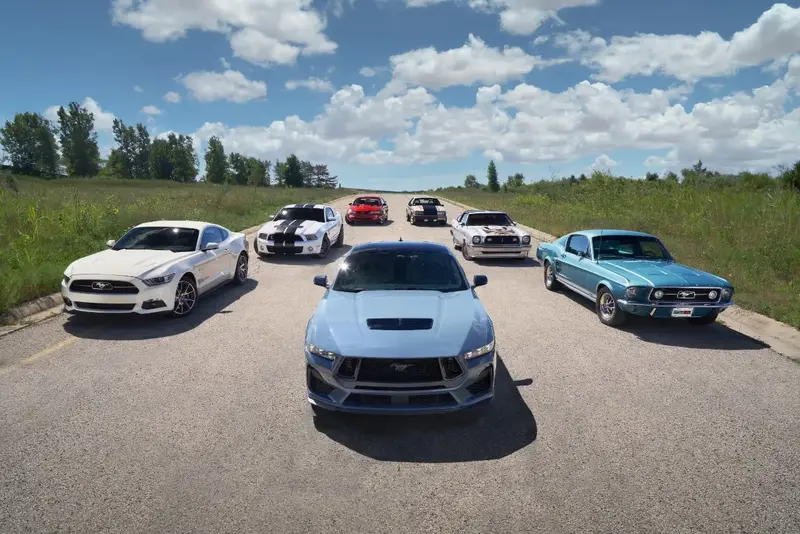History Of The Ford Mustang
First Generation
The first-generation Ford Mustang changed the course of American automotive history. While enthusiasts often mention the so-called 1964½ Mustang, all models were officially released as 1965 model year vehicles. Early builds, however, have unique details that set them apart.
From 1965 to 1973, the Mustang was available in hardtop, convertible, and fastback body styles. Of the first million sold, 755,000 were hardtops, 142,000 convertibles, and 103,000 fastbacks. Its immediate success came from appealing to a younger audience—the median buyer age was 31, with 35% single and 42% female owners.
1965-1966
Early 1965 Mustangs (nicknamed 1964½ by enthusiasts) came with a 170 CID inline-six, 260 CID V8, or 289 CID V8 with 271 horsepower. Later in the run, the six-cylinder grew to 200 CID, and the 289 received a two-barrel carburetor option. V8s outsold six-cylinder models by a 2:1 margin.
The GT Package debuted in this era, setting the stage for future Mustang performance trims. It was also when Carroll Shelby introduced the legendary Shelby GT350.
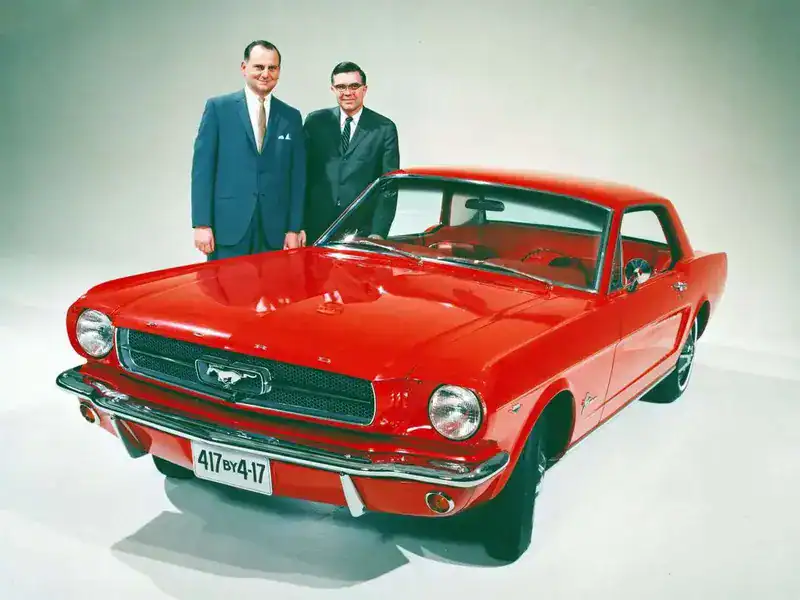
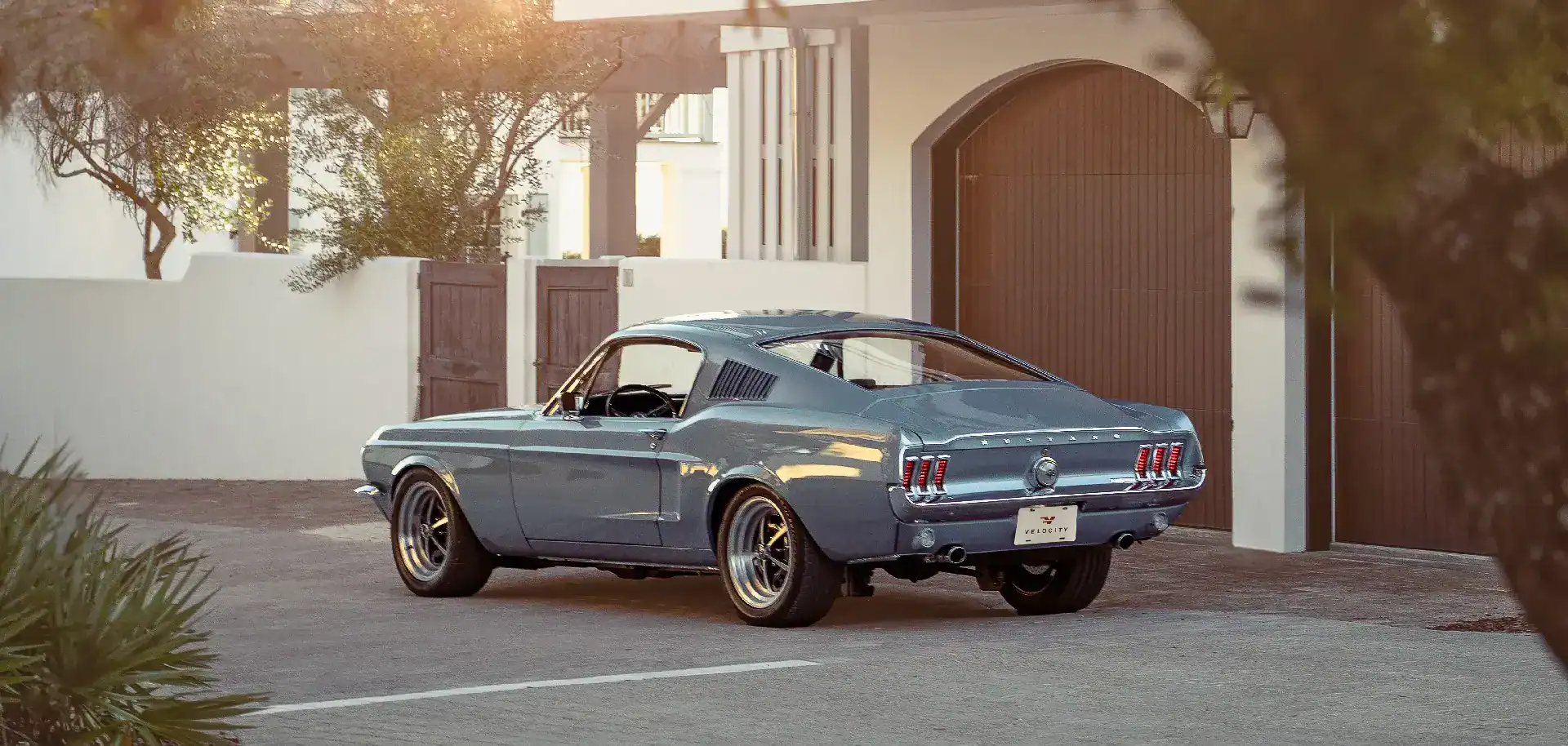
1967-1968
For 1967, the Mustang grew in size and gained distinctive concave taillights. The extra room allowed for big-block V8 engines, including the 390 CID, 428 Cobra Jet, and 302 CID (which replaced the 289 four-barrel).
Many collectors and enthusiasts consider this the perfect balance of style and performance—so much so that it inspires the Velocity Ford Mustang today.
1969-1970
The 1969 redesign brought legendary trims like the Mach 1, Boss 302, and Boss 429. The GT was discontinued, and the fastback became the SportsRoof. Engine options expanded to include the 250 CID inline-six, 351 CID V8, and the mighty 429 CID V8 with 375 horsepower.
The 1970 model is easy to spot with headlights inside the grille and stacked air intakes between the headlights and fenders.
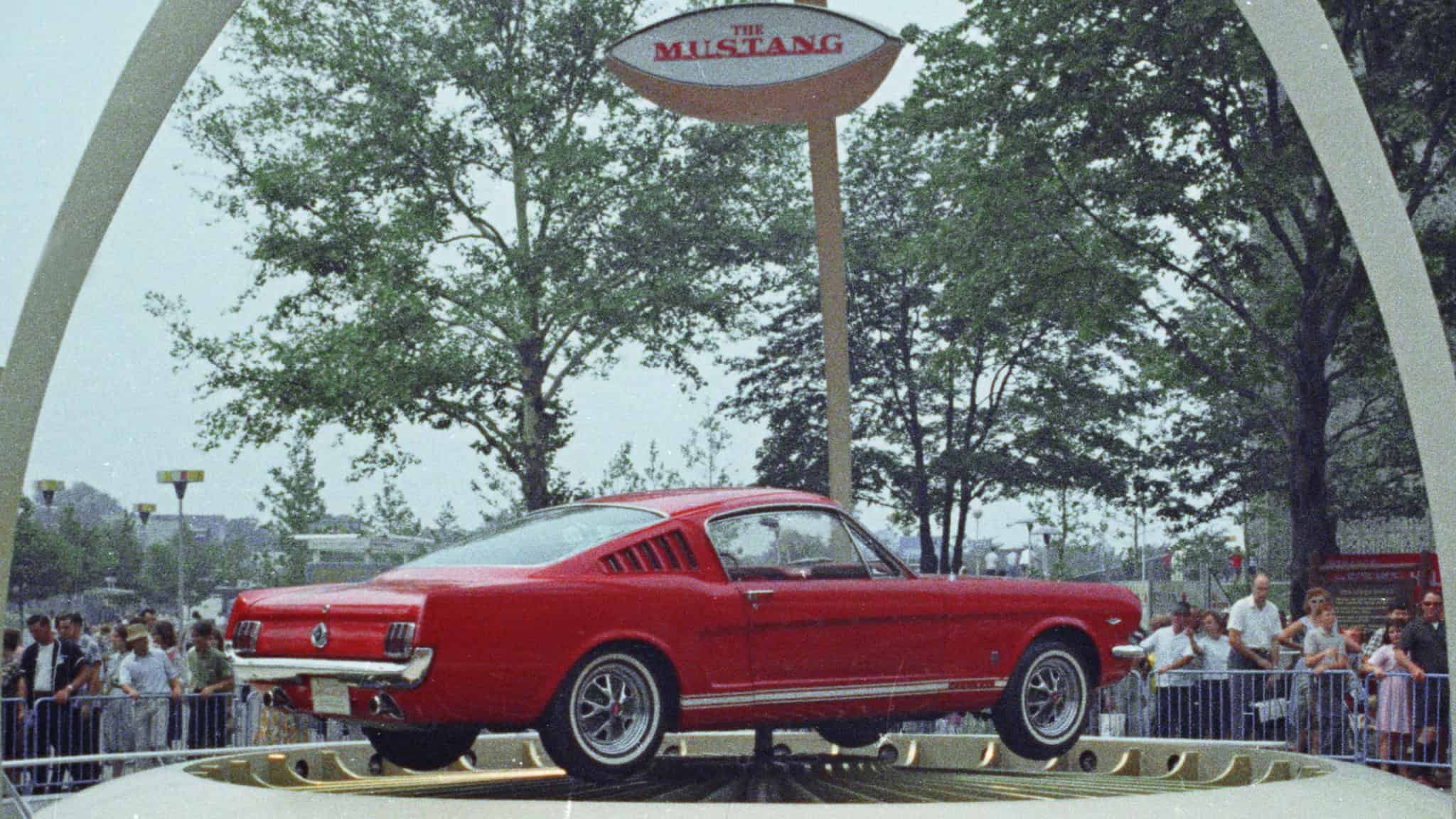
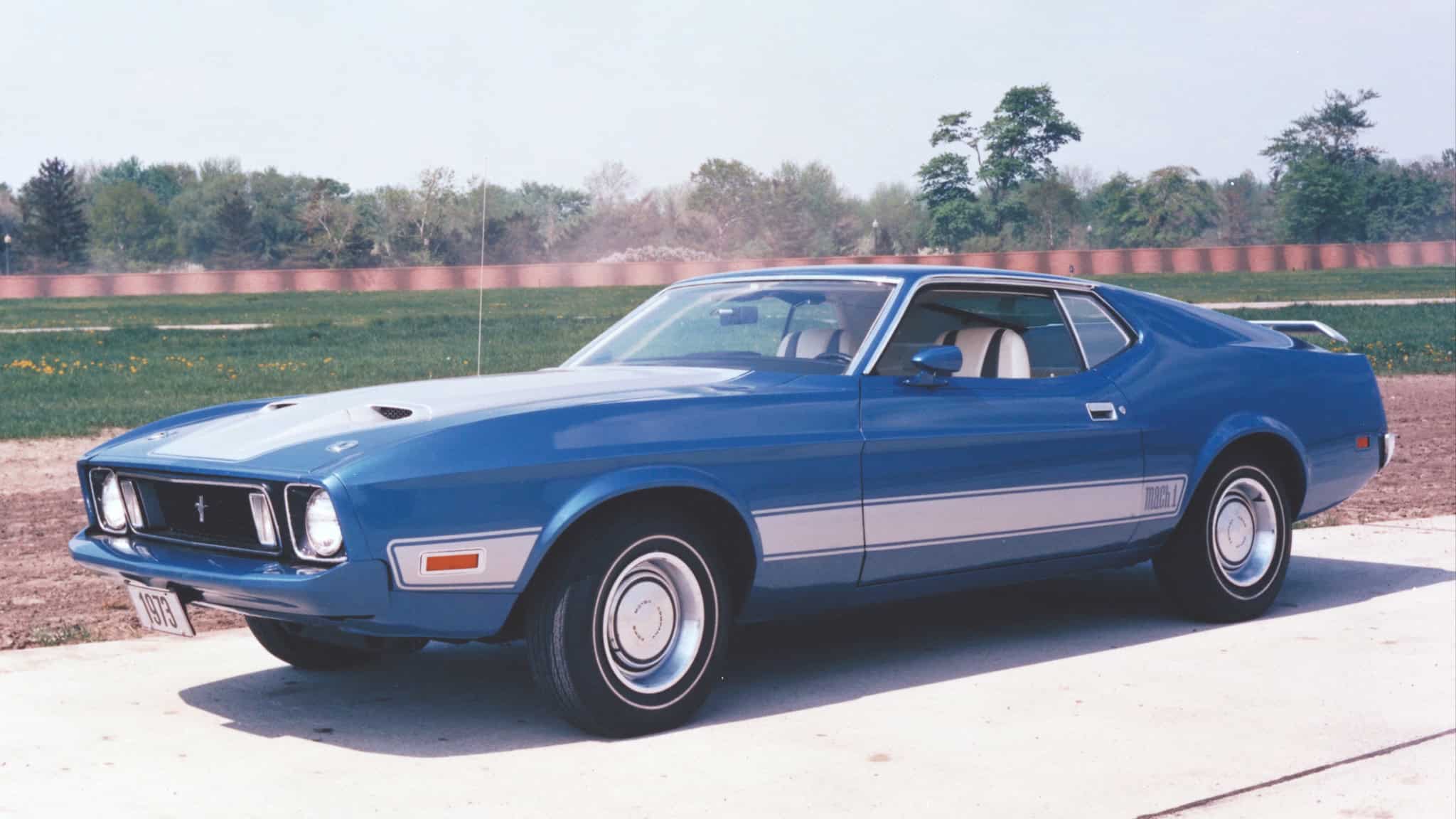
1971-1973
This era marked the largest departure from the original Mustang’s proportions—8 inches longer and 6 inches wider than the 1965 model. Engine choices narrowed to the 250 CID inline-six, 302 CID V8, 351 CID V8, and the 429 CID V8 (discontinued after 1971).
How Much Is a Classic Ford Mustang Worth?
The value of a classic Ford Mustang depends on year, condition, rarity, originality, and current market trends.
1965–1966
1967–1968
1969–1970
Second Generation
Facing the growing size and declining relevance of the Mustang, Lee Iacocca, upon becoming President of Ford, pressed for a compact reinterpretation of the pony car ideal. The result was the Mustang II, a model intentionally downsized and launched just before the 1973 Oil Crisis—a move Ford strategists recognized as fortuitous for tackling fuel and emission concerns of the time
1974–1978
As the Mustang’s size continued to increase in the late ’60s and early ’70s, Lee Iacocca advocated for a return to a smaller, more efficient pony car. His vision proved perfectly timed—almost by chance—as the Mustang II launched just before the 1973 Oil Crisis, a moment that forced many automakers to rush smaller, fuel-conscious vehicles to market.
The 1974 Mustang II holds a unique place in history as the only model year without a V8 engine option. Buyers could choose between a 140 CID inline-four or a 171 CID V6. This was a radical shift from the Mustang’s performance roots but matched the economic and fuel-efficiency needs of the time.
In 1975, the 302 CID V8 returned—rebranded as a 5.0L—delivering 140 horsepower. This engine became the sole powerplant for the 1978 Mustang II King Cobra, a limited-production performance trim that remains a sought-after collectible today.
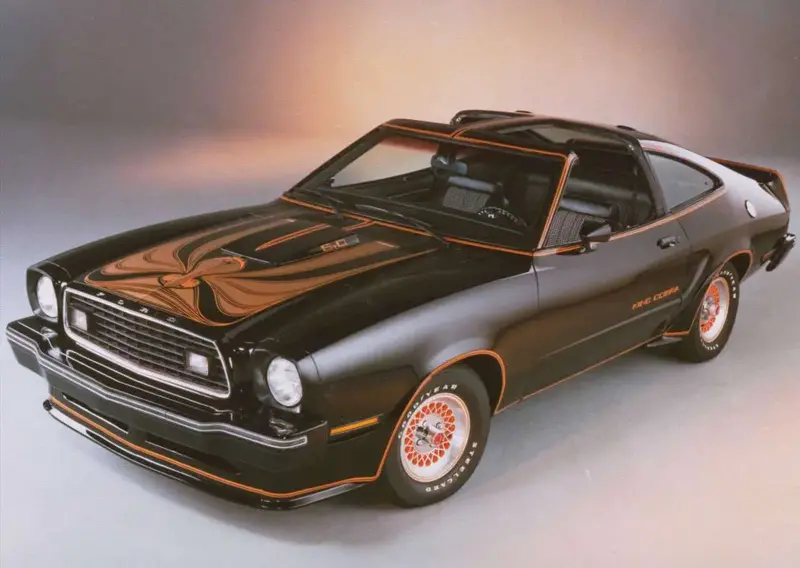
Third Generation
The Third-Generation Ford Mustang (1979–1993)—known as the Fox Body Mustang—was built on Ford’s versatile Fox platform, offering improved handling and more interior space. Engine options ranged from four-cylinders (including a turbocharged SVO) to the legendary 5.0L V8, with performance returning in 1982 alongside the revived Mustang GT.
1979-1993
Key special editions included the police-spec Mustang SSP, the aerodynamic Mustang SVO, and the high-performance SVT Cobra and Cobra R in 1993. The Fox Body received a major facelift in 1987, inspired by the SVO’s styling.
Produced for 14 years, it outlasted three Camaro/Firebird generations and today remains a favorite for collectors and performance enthusiasts due to its lightweight build, mod-friendly design, and strong aftermarket support.
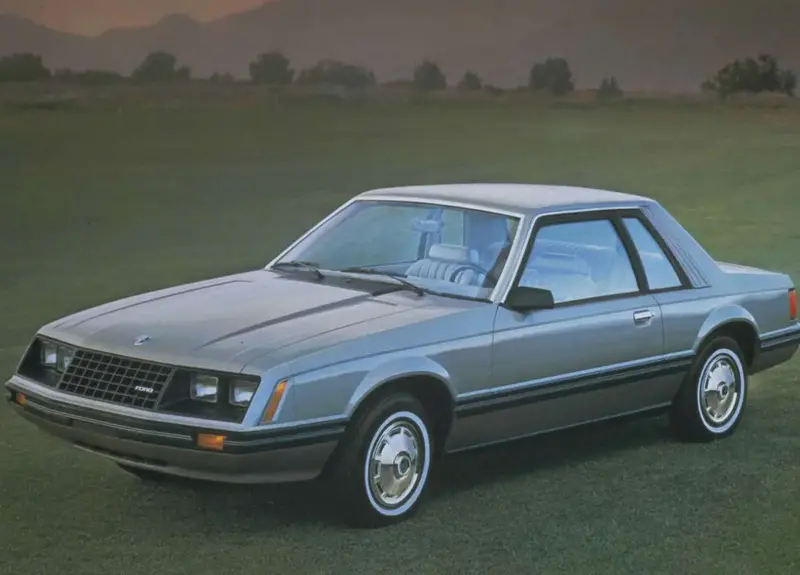
Fourth Generation
The Fourth-Generation Ford Mustang (1994–2004) retired the notchback but reintroduced classic Mustang styling cues like the dual-cowl dashboard and three-bar taillights. Initially powered by a 5.0L V8, the Mustang GT transitioned in 1996 to Ford’s 4.6L Modular V8, with output climbing from 215 hp in 1994 to 260 hp by 2004.
1994–2004
In 1999, the Mustang adopted Ford’s New Edge design language, bringing sharper lines and a more aggressive profile. That same year saw the return of the SVT Cobra, notable for introducing independent rear suspension to the Mustang lineup. Special editions included the 2001 Mustang Bullitt, inspired by the 1968 Steve McQueen film, and the 2003–2004 Mach 1 with its functional Shaker hood.
This generation marked the end of Mustang production at Ford’s Dearborn Assembly Plant, as assembly shifted to Flat Rock for the fifth generation and beyond.
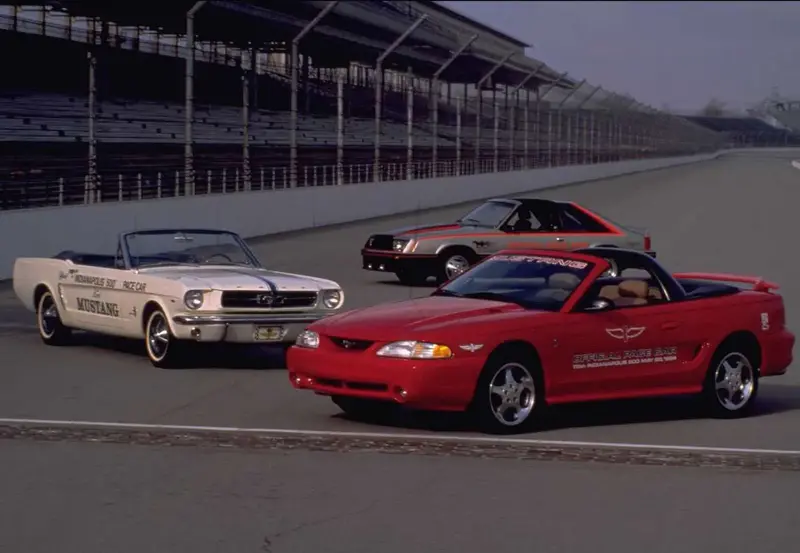
Fifth Generation
The Fifth-Generation Ford Mustang (2005–2014) embraced a full retro design, drawing inspiration from the original 1960s models with exposed headlights, grille-mounted fog lights, a fastback-style roofline, and three-bar taillights surrounding a faux gas cap. Initially, buyers could choose between a 4.0L V6 or a 4.6L V8 until 2007, when the Shelby GT500 arrived with a supercharged 5.4L V8.
2005–2014
In 2011, the iconic 5.0L returned in the form of the Coyote V8, an engine family also powering the Velocity Ford Mustang, Velocity Ford Bronco, Velocity Ford F-100, and Velocity Ford F-250. Special editions flourished during this era, including the 2008–2009 Bullitt Mustang and the 2012 Boss 302 and Boss 302 Laguna Seca, which paid homage to the brand’s performance heritage.
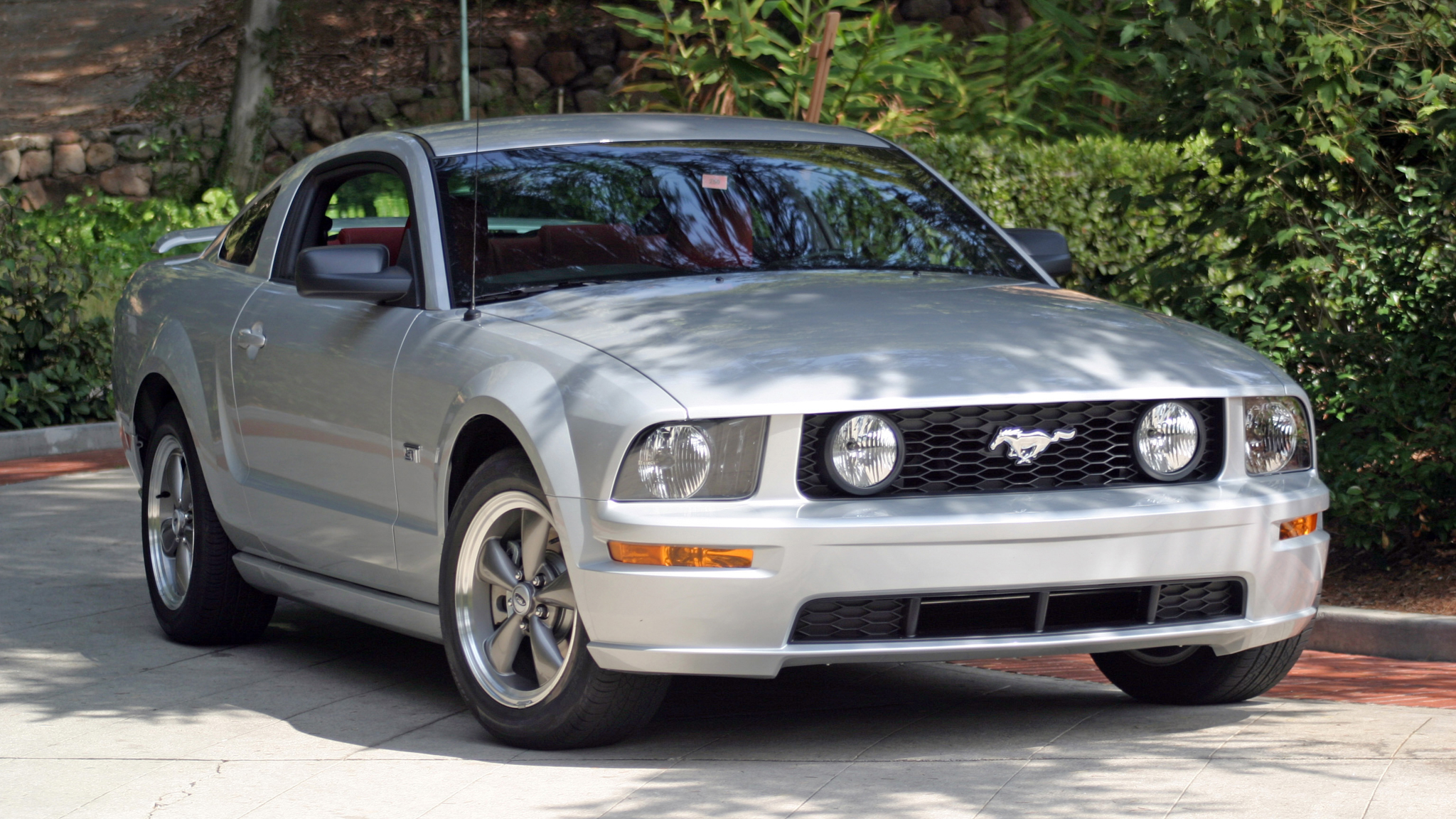
Sixth Generation
Unveiled to coincide with the Mustang’s 50th anniversary, the sixth-generation model marked one of the most significant leaps forward in the pony car’s history. Rather than leaning heavily on retro styling cues, Ford’s design team opted for a sleek, contemporary look with aggressive lines, a wider stance, and improved aerodynamics—signaling the Mustang’s readiness for a global market.
This generation also delivered major engineering upgrades, most notably the introduction of an independent rear suspension across all models, greatly improving ride comfort and handling. Under the hood, buyers could choose from a variety of modern powertrains, including a 2.3L EcoBoost turbocharged four-cylinder, the updated Gen II and Gen III 5.0L Coyote V8s, and eventually the supercharged 5.2L Predator V8 in the monstrous 2020 Shelby GT500, delivering a staggering 760 horsepower.
2015-2023
In 2018, Ford retired the naturally aspirated 3.7L V6, further focusing on performance-oriented options. That same year, the Mustang lineup received updated styling and performance enhancements, and Ford celebrated the production of its 10 millionth Mustang, a milestone that underscored the model’s enduring global appeal.
Today, the sixth-generation Mustang remains a blend of heritage and innovation, balancing everyday usability with track-ready performance and cementing its status as one of the world’s most recognizable sports cars.
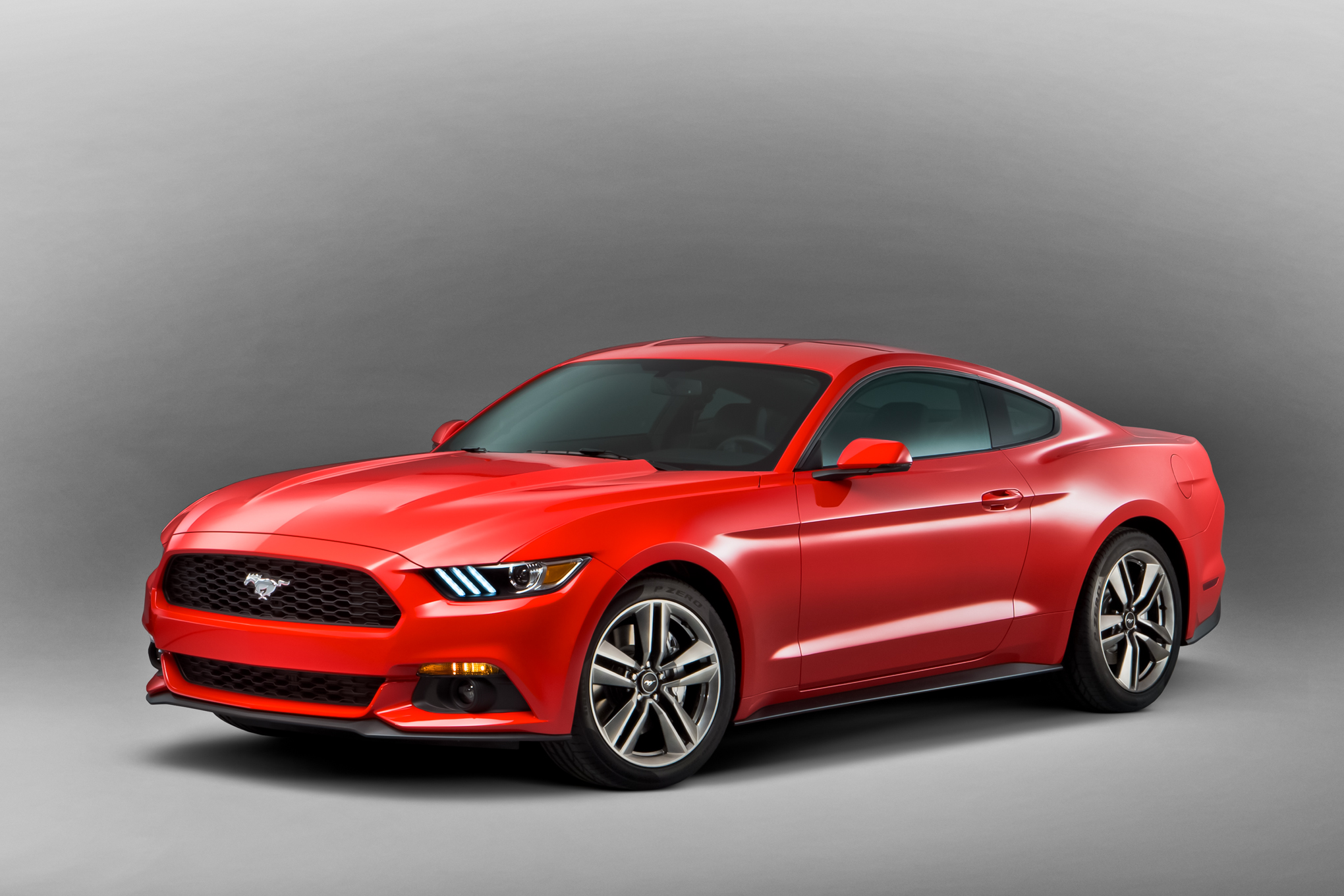
Seventh Generation
Launched for the 2024 model year and entering production in May 2023, the seventh-generation Ford Mustang arrived at a pivotal moment in automotive history. Its debut came just months before the discontinuation announcements for the Dodge Challenger and Chevrolet Camaro, positioning the Mustang as potentially the last true pony car still in production.
2024-Present
While staying true to its heritage with aggressive styling and driver-focused performance, this new Mustang packs serious modern muscle. The headline powerplant is the Gen IV 5.0L Coyote V8, delivering up to 500 horsepower in the track-oriented Mustang Dark Horse. For those seeking the pinnacle of Mustang engineering, Ford introduced the Mustang GTD—a street-legal, race-inspired supercar boasting over 800 horsepower and a rear-mounted transaxle for exceptional weight balance and handling.
By blending cutting-edge performance technology with the raw emotion of a classic American V8, the seventh-generation Mustang not only carries the torch for Ford’s pony car legacy but may also represent the final chapter of the internal combustion muscle car era.
